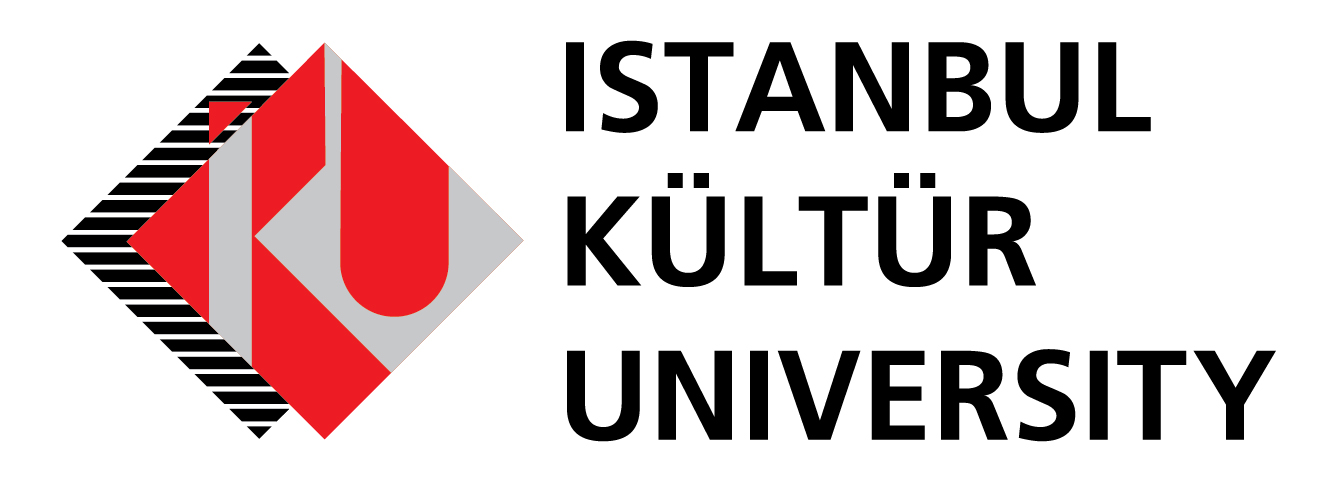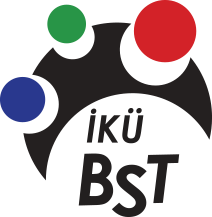A
Abstract: A brief summary describing the main idea or content of a work, such as a book, article, or thesis.
Advisory resource: All resources that inform and/or direct users in their area of interest or in a way that meets their information needs.
Almanac: Annual publication containing a wide variety of data, usually presented in the form of tables, boards and charts.
Annal: A periodical that records the minutes of an association or organization, or the events and developments of a particular discipline or field of study.
Announcement service: The service used to inform and inform the user after the new resources or the resources requested by the user are supplied to the library.
Anonymous work: A work with an unknown author.
Article: A short work on a topic, usually 1-35 pages long. It is often printed as part of a tabloid, scientific journal or newspaper.
Atlas: Hardcover work, usually consisting of maps. Works consisting of pictorial plates on other subjects, such as anatomy, are also called Atlas.
B
Bibliographic Citation: Information used in catalogs, directories, and literature bibliographies to identify a publication.
Bibliographic Database: An electronic version of a catalog or series. Using an electronic database, the user can find what they are looking for by searching under publication, author, subject, title or other search terms.
Bibliographic Identity: It is the recording of information about the properties of a material in a certain order and sequence.
Bibliography: A list of books or articles on a particular topic.
Boolean Operator (AND/OR/NOT): Software tools that provide more detailed and precise results in databases or catalogs.
C
Call Number: An alphanumeric code (consisting of letters and numbers) used to locate an item in the library collection and indicate its location on the shelves. The place numbers are both listed in the catalog and written on the spine of the book.
Catalog: A collection of records describing the content of a particular collection or group of collections. For example, IKU Library catalog shows records in all collections. OCLC WorldCat, on the other hand, displays books, magazines and other materials from OCLC member libraries around the world.
Charge: It is the process of lending any work from a library's collection made available to the user.
Circulating: A work that is not inconvenient to be taken out of the library by the readers.
Class Number: It is the first part of the number seen in the catalog and on the back of the book, and indicates the place of the work in the classification system and its physical position on the shelves.
Collection: It is a set of objects brought together in physical or electronic environment according to their common characteristics.
Copyright: A form of protection provided by law to authors who create "original works of creativity" such as literary, dramatic, musical, artistic and other intellectual works. Copyright is protected by Law No. 5846 on Intellectual and Artistic Works in Turkey.
Cross-Reference: Detailed flag slip referencing referral " " that sends the user from one topic or name to another in a catalog or directory.
D
Data: Unprocessed, unedited raw facts. The source that provides the formation of all kinds of information is data.
Database: Standardized information that can be scanned through various parameters in a electronic environment. In libraries it usually means electronic catalogs and directories.
Dewey Decimal Classification (DDC): Library classification system that divides knowledge into ten major classes (00-999). 000 General Subjects, 100 Philosophy-Psychology, 200 Religion, 300 Social Sciences, 400 Linguistics, 500 Natural Sciences and Mathematics, 600 Technology, 700 Arts, 800 Literature and Rhetoric, 900 Geography-History.
Dictionary: An alphabetical list of specific vocabulary for a particular topic or field of study, with short descriptions in it.
E
Edition: Information about the edition of the work, is often placed at the bottom of the title page or on the left page. Usually this information shows the name and address of the printing house and the date the book was published.
Electronic Resource: Publications containing visual and audio data that can be accessed and read via computer and internet, presenting up-to-date information at the desired time and speed.
Encyclopedia: A work containing factual articles on topics in each knowledge area and arranged in alphabetical order.
G
Field: A section of a record in a database dedicated to a particular data type. For example, in a library catalog, author, title, ISBN, subject headings are fields.
Frequency: The intervals at which serial publications are published. Frequencies that are frequently encountered in libraries are: Daily, weekly, biweekly, twice a month, monthly, bimonthly, quartet a year, biannually, annually, every three years, irregular (without a calendar).
Full Text: The entire content of a material such as an article, book or encyclopedia in electronic format.
H
Handbook: A book for quick reference that collects facts about a topic or describes methods and procedures for performing certain tasks.
Heading: Name, word, phrase used as an access point to a bibliographic record organized according to certain rules.
Holdings: The total of printed and electronic materials owned by a library and listed in its catalog.
I
Imprint: Information containing the publication information of a book. It usually gives the publisher's name, location and date of publication on the cover page, while the publisher's name and location are given on the back page of the title page.
Index: A list or systematic guide to the content of a set of data. For example, the index of periodicals or the index on the back of a book (index). Usually, the electronic ones of the directories organized according to the subject, author or keyword are preferred because of the convenience they provide.
Information: It is a collection of purposeful and transmittable data recorded in electronic or physical media.
Interlibrary loan (ILL): It is a cooperation system between libraries and users can borrow materials from other libraries included in the system. The ILL service is usually provided through the reference departments of the libraries, as in the Boğaziçi University Library.
ISBN (The International Standard Book Number): A numerical code given to a book and unique to it.
ISSN (International Standard Serial Number): A numerical code given to a periodical and unique to it.
K
Keyword: The word(s) of particular importance in the title, abstract or the entire text of a work.
L
Limited Edition: Usually get published at various times of the year; monthly, weekly publications such as magazines, tabloids and newspapers.
M
Manuscript: These are works of art, many of which are rare, which are important in the world of science, art and culture with their content or artistic aspects, which are hand-written, reproduced, as a result of very laborious work on various subjects before the printing press was found and spread.
Multimedia: Any information source that presents information using more than one format (print, image, audio or visual).
N
Non-book material: Resources, such as books, that are not in hardcover or chapters and are not in printed form. Pictures, stamps, banknotes, graphics, photographs, audio and video recordings, etc. non-book materials.
O
Off-campus access: Access to databases via the library website with username and password for off-campus access.
Online catalogue: A library catalog consisting of a collection of bibliographic records in machine-readable form available in electronic form.
Open access: The full text of the publications is freely accessible to the public via the internet without financial, legal and technical barriers.
Open data: Data that does not hold any copyright and can be used, distributed and edited by anyone.
Open shelf – Open access: It defines users' free access to bookshelves. Users can pick up the books they want to read or borrow from the shelves by themselves.
P
Primary Literature: Original research or writing on a topic. It includes technical reports, conference works, patents, theses and journals.
Print: All copies of a work printed with the same editing. Changes to the edition, such as "new edition" or "second edition", mean that the work has been renewed or its content has changed.
Printed Source: Materials created, printed or photographed on different subjects or in different genres.
R
Rare Books: Books that are of special importance in terms of their content, rarity, imprint or publication date, physical qualities or condition, and other distinguishing features they have.
Reference Collection: Encyclopedias, dictionaries, handbooks, guides, etc. are materials that contain such material and are not loanable. The works in the collection usually consist of works that should be at the disposal of the users at all times.
Reference Service: The service of providing the information that users need.
Reference: Giving the bibliographic tags of the information sources used in the form of a list.
Return date: The date on which borrowed library resources should be returned or renewed.
Return: Returning back of a resource borrowed from the library on or before the return date.
S
Secondary Literature: Material published on primary literature (reviews, introductions and reviews, popularizations, textbooks, encyclopedias, handbooks, etc.) that refers the reader to primary sources (summaries, indexes, bibliographies).
Source of Information: Any source on which the information is recorded.
Subject Dictionaries: Dictionaries that list terms for any topic in alphabetical order.
Subject Heading: A term, name or phrase used as a headline in a catalog or index organized by topic. Directories often use a standardized subject heading system. This serves the user's browsing convenience.
Subject Number: Number given by topic to provide quick and easy access to the resource.
Syndetic Structure: A system of cross-references to titles in a catalog or directory, "see or see also" other titles.
T
Technical Services: All of the processes from the entry of a work into the library to the user's use and access.
Thesaurus: A resource showing the structural and logical relationships of synonyms and related terms.
U
User: A person who uses the collection and/or services within or outside the library in line with their needs.
V
Volume: The sum of the issues of a periodical, usually one year.


